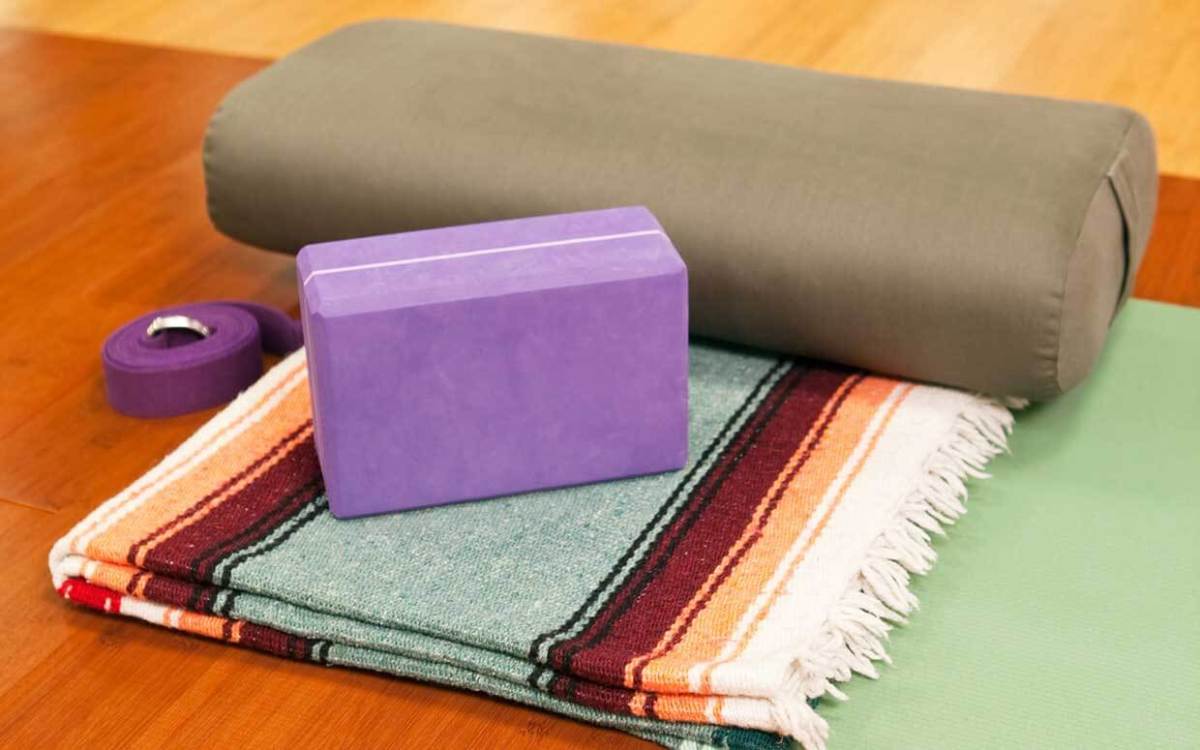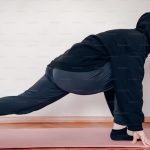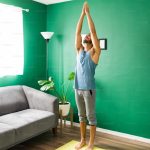Props are really, really great. They are SO useful to keep you safe in class and help you to move deeper into a pose than you could without them. They open up a world of possibilities for making poses more accessible AND more challenging. But let’s start from the beginning…
What ARE Props?
Props come in in a range shapes and sizes.
Blocks tend to be flatter with one long edge, one medium edge and a short edge – imagine a big book shape. Bricks tend to be smaller blocks with one long side and 2 pretty much equal length sides – yup, a bit like a brick… Blocks and bricks can be made of dense foam, wood or cork.
Yoga belts are usually woven cotton or webbing and can be a single length with a buckle at one end or can be sewn into a loop or figure of eight.
Meditation cushions, or zafus, come in a variety of shapes and sizes with all sorts of fillings from spelt to foam. Bolsters are similar but tend to be long, round and sausage-like.
Then there are yoga wheels, head up stools, eye masks, weights, blankets… All sorts of things that yogis use in their practice. I guess the modern yoga mat is a prop too, really.
Why use them?
Props can be used to improve alignment in a pose when a yogi has yet to develop sufficient range of movement to achieve the full expression of that pose.
An example would be using a brick under the hand in trikonāsana (triangle) when a student can’t reach the floor without folding the trunk forwards. Placing a brick under the hand at a height where the trunk remains rotated upwards gives great alignment for that student and teaches a good movement pattern that can be maintained as the pose deepens with practice. Using a block like this usually makes the pose safer for the yogi, too, as it prevents over stretch and uncontrolled movement.
Props can also be used to teach specific muscle activation in a pose. Think about placing a block between the knees in setu bandhasāna (bridge). By squeezing the block as you lift the pelvis, the inner thigh muscles activate to prevent the knees rolling outwards. Learning to activate these muscles with the block is the first step to being able to activate them in the pose automatically in future.
Another really useful prop is the belt. This is saviour in paścimottānāsana when your feet seem to be just too far away. Here, the belt is basically an arm extension – loop it round the feet and pull to fold. Another way to use a belt is to encourage one element of a pose that is often hard to achieve. Think about prasaritta padotanāsana (wide legged forward fold with hands on hips), with the belt looped round the elbows. This encourages the elbows to stay drawn together to open the chest. Delicious!
Sitting is another time where many yogis gain SO much from using a block or cushion under the seat. This lifts the hips above the knees and allows the pelvis to roll into anterior tilt. Without this movement of the pelvis the spine is often unable to lengthen and opening the hips and chest are a real struggle. Sukāsana (easy pose) is anything BUT easy for most of us without that prop!
Purpose-made Props
Many yoga classes have props available for you to use as you want or need to, while some yoga teachers insist you bring your own. Purpose-made yoga props are available in stores and online, ranging in price from a few pounds to positively eye-watering amounts. It is well worth shopping around to find something to suit your budget if you are going to buy your own.
Having your own props is great if you have enough spare cash and the space to store them. But not everyone is in that position. Or maybe you are practising away from home – hotels and hostels are not noted for their plentiful supply of yoga props, I have found… But that does not mean props are not available to you. No matter where you are, there are things you can use as props: you can improvise, adapt and overcome! Here’s how.
Improvised Props for every occasion
With just a little imagination, most of the common props you find in a yoga studio can be very effectively improvised from normal household items.
1. MEDITATION CUSHIONS
So many options for this one… Try a normal sofa cushion. Or maybe 2 piled up. Or fold a pillow and place the folded end under the buttocks with the free ends supporting the thighs. Folded blankets or towels piled up can work well too. Or I have been known to sit on the edge of our garden decking with my lower legs rested on the grass in sukāsana – this is SO lovely for an impromptu early morning breath session or meditation in the open air.
2. BLOCKS AND BRICKS
If going under buttocks, then folded towels and blankets work well as a block. If needed for under hands to support weight, then positioning yourself near a step or low stool might work. In the trikonāsana example above, placing your hand on your own lower leg gives a point of fixation but it does make balancing more of a challenge, so it doesn’t suit everyone.
3. BELT
The easiest way to improvise a yoga belt is with the one out of your trousers! As long as it is not stretchy, any normal belt will do. Alternatively roll up a towel to tea towel length-ways and use that for looping round feet on paścimottānāsana.
4. HEAD REST IN BALĀSANA
If you usually need to rest your head on a block in balāsana (child pose) then try making fists and place one on top of the other with the thumb side uppermost. Resting the forehead on this platform can be just as good as a purpose made block and SO much easier to move out of the way as you transition into the next pose of a flow sequence. Result!
5. PARTNER BALANCES
Practising alone when the online teacher says ‘reach for a partner to balance’? Never fear – go to the nearest windowsill or kitchen units. These make perfect stable partners for any home practice. I love to use a windowsill to support my hands in a modified virabhadrāsana 3 (warrior) as it lets me REALLY focus on activating my legs in the balance.
6. BOLSTERS
See meditation cushions above and think BIGGER… Try 3 or 4 towels or blankets rolled up into a sausage to make a bolster. If you have a foam roller to hand, you could try that – though I do recommend wrapping it in some padding or putting a pillow over it if you are going to spend any amount of time resting on it. They can be SO hard and uncomfortable.
And finally
Purpose-made props are a relatively recent addition to the yoga world. Generations of yogi’s practised prop-free for centuries.
Did you know that the first yoga mats were born when someone tried pieces of carpet underlay to stop their hands slipping in down dog? Improvisation at its best! And I suspect that the first blocks used were just that – blocks of wood.
I love the idea of connecting to our yoga roots and practising more simply using what is to hand. It opens up the possibility of yoga any place, any time, anywhere. It brings freedom and simplicity for me. I hope it does for you too.












